
| The Pilbara - Karajini National Park |
Getting there (from Broome)
|
|
|
|
||
 |
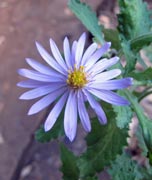 |
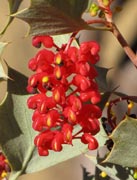 |
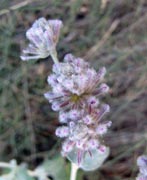 |
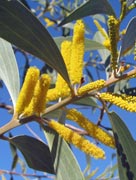 |
The flowers of the Pilbara are quite different from those of the Kimberley
|
|||
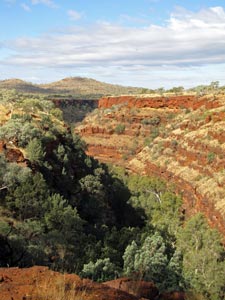 Looking down Daley's Gorge |
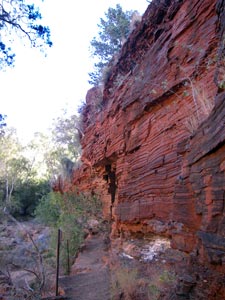 Track beneath the iron rich layered walls |
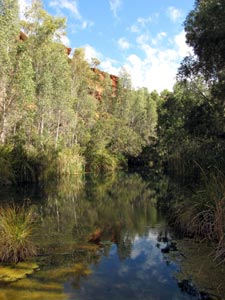 Tranquil pool above Fortescue Falls |
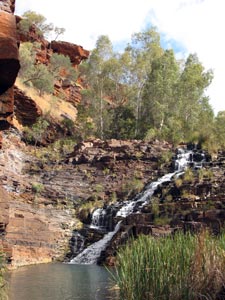 Fortescue Falls tumbling down the rocks |
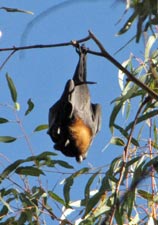 Fruit bat at rest |
|
|
||||
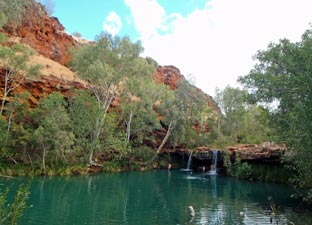 Fern Pool (aka Jaburu) |
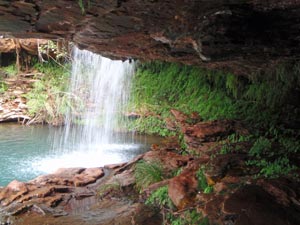 The ferny grotto behind the falls that gives the pool its name |
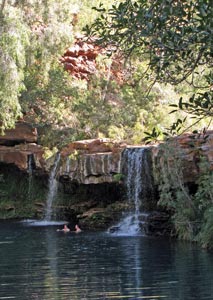 Close up of the twin falls at Fern Pool |
|
||
|
||
Dale’s Gorge Walk (7 km) |
|
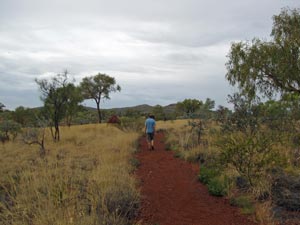 Red gravel path heading across the spinifex plain |
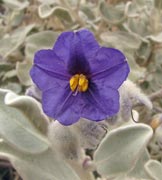 |
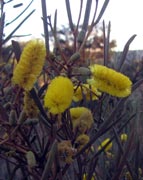 |
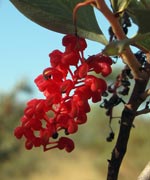 |
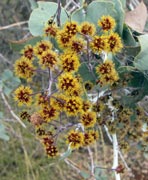 |
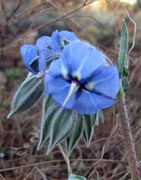 |
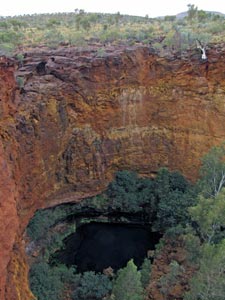 Looking down into the depths of Circular Pool |
|
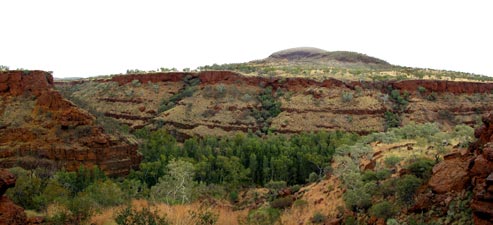 View over Dale's Gorge from The Threeways Lookout |
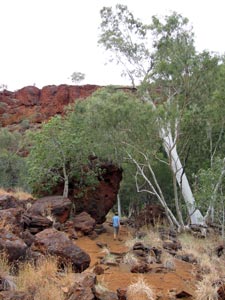 The track led through a jumble of dark brown boulders |
A little way further on we found what we were seeking – the route down. A series of stone steps led us down the steep gorge wall to reach the creek at the bottom of the side gorge – an amazing landscape of flat rock plates, seemingly stacked to create a series of terraces, on which lay huge amorphous boulders that had fallen down from above. We followed a set of yellow dots across the blocks and terraces, past the boulders and up the tree-lined stream to reach the sanctuary of Circular Pool. It was even better than when viewed from above. |
 Creek spreading out over the flat rocks |
|
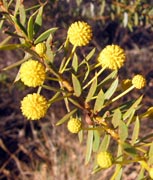 |
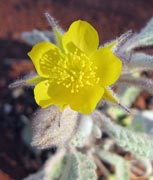 |
||
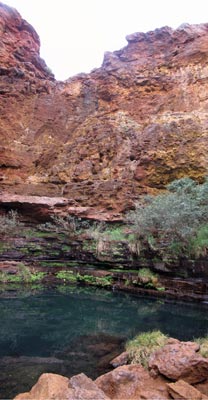 The clear blue waters of Circular Pool |
|
||
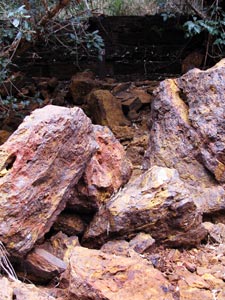 The rock had shades of pink and blue ... |
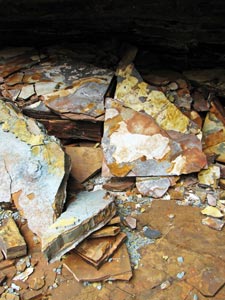 .. and orange and yellow and grey - amazing!! |
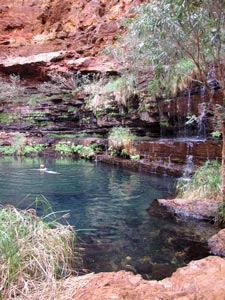 Great place for a clear cold dip |
|
|
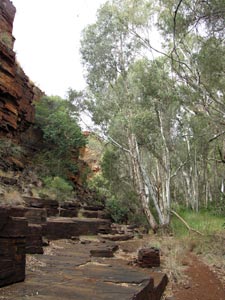 Paperbarks against the cliff face |
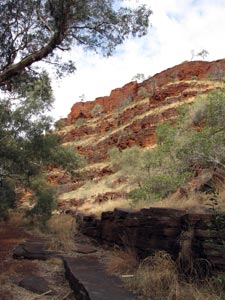 Looking up the tiered gorge wall |
|
|
|
|
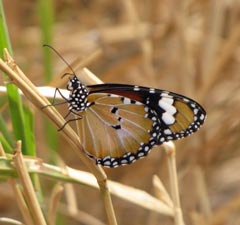 |
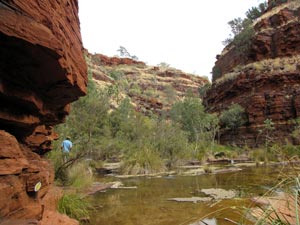 Hugging the cliff wall to squeeze past a waterhole |
|
|
|||
 Checking out the structure and .... |
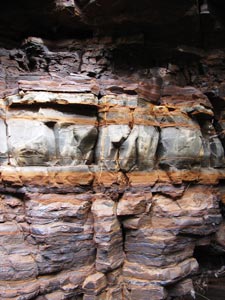 ...colour of the rock face |
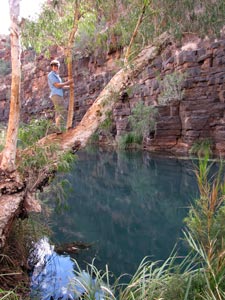 Strange creature in a tree |
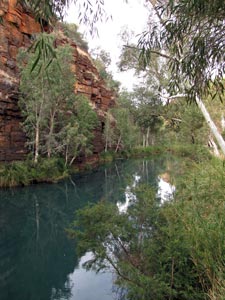 Yet another limpid green pool |
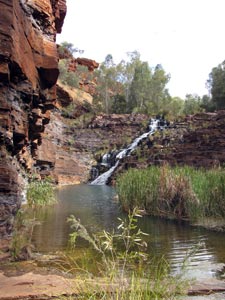 Back to Fortescue Falls |
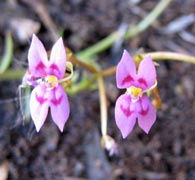 |
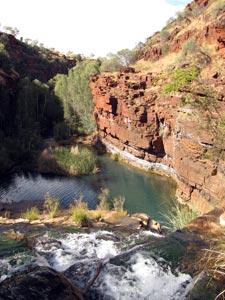 Looking over the pool from the top of the falls |
|
||
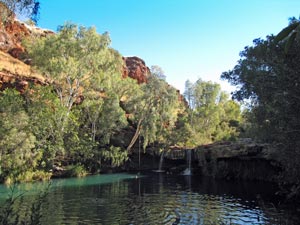 One last swim in Fern Pool |
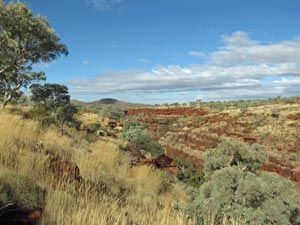 The open landscape of the gorge rim |
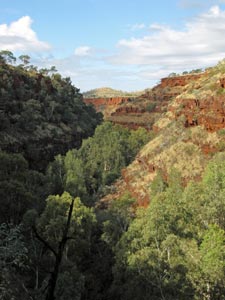 Climbing out of Dale's Gorge
|
|
||
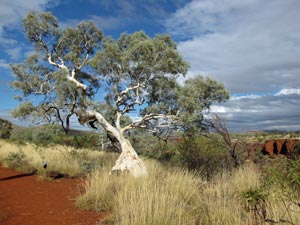 Classic outback photo |
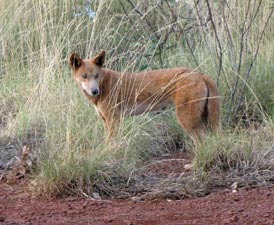 The dingo who sang in the night |
|
Kalamina Gorge (3km) |
|
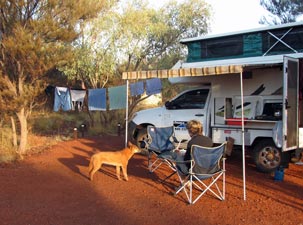 A dingo joins the fair Nello for breakfast |
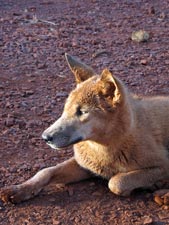 Karajini dingo |
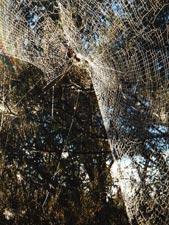 Spider art - the shawl .... |
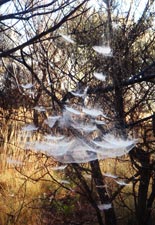 .... the chandelier ... |
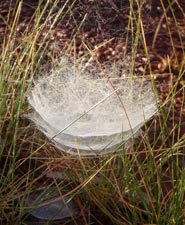 ... and the tiered cups |
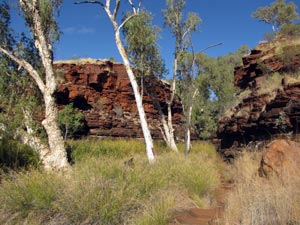 Entering Kalamina Gorge |
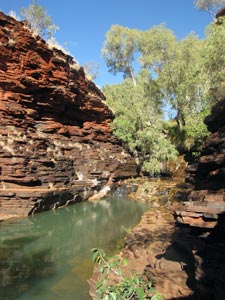 Waterhole at the head of Kalamina Gorge |
The first was Kalamina Gorge, with walls of ca 30m high, not as deep as Dale's, but with its own charms. We descended the stone steps that led us to its floor, making a short detour upstream to visit the waterfall percolating down a wide rock stairway. A few metres further, the stream cascaded over a small rock ledge into a long translucent green pool.
|
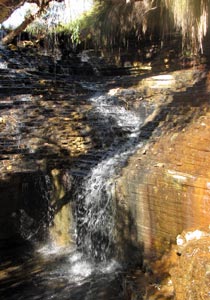 The tiered course of Kalamina Falls |
|
|||
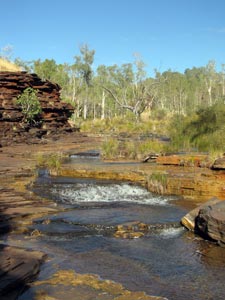 The stream flowed across a bed of flat rock... |
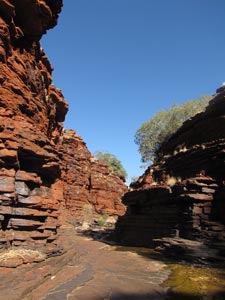 ... before entering a narrow gorge .. |
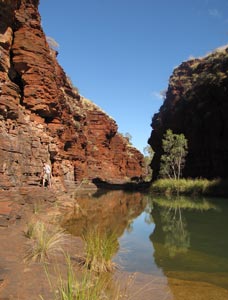 ... past still waterholes .... |
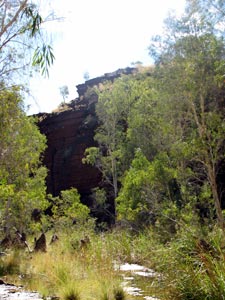 ... and swampy bogs lined with paperbarks |
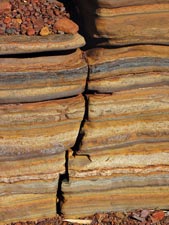 |
|
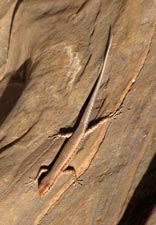 |
|
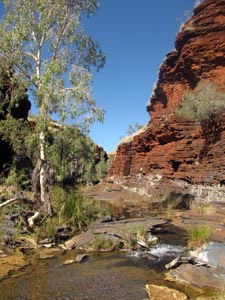 Kalamina gorgescape |
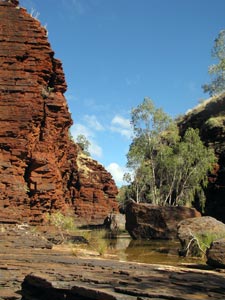 Sunlight on the layered rock walls |
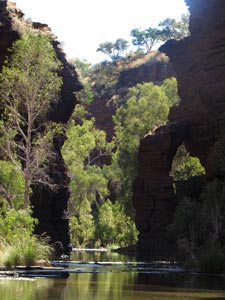 The gorge narrows at Rock Arch Pool |
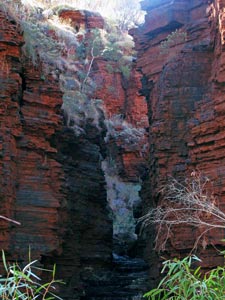 The intense red walls of a shady side-gorge |
Joffre Gorge |
 Joffre waterfall tumbles over 100m down into the gorge |
|
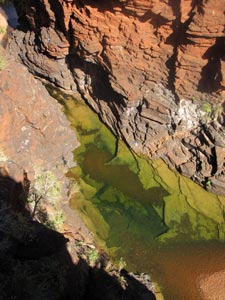 Looking 100m down onto the green waterhole at the bottom of Joffre Gorge |
|
||
Hancock-Weano Circuit (5km) |
|
|
|
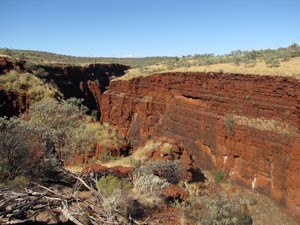 Nearing the rim of Hancock Gorge |
|
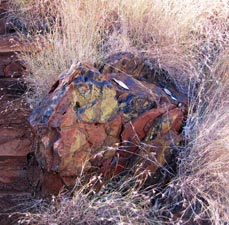 A red, yellow and blue rock - only in the Pilbara |
|
||
 Descending the ladder into Hancock Gorge |
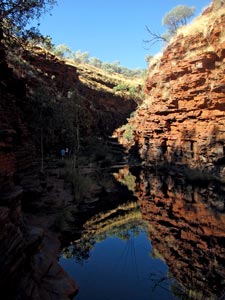 A still dark pool in Hancock Gorge |
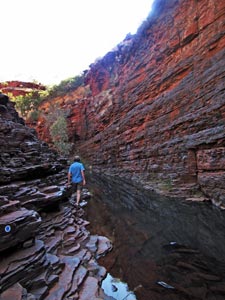 The path follows a narrow terrace alongside the pool |
|
||
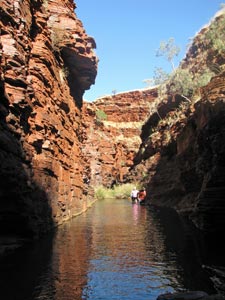 Wading through the first narrows |
 The fair Nello swims through the second narrows |
 The aptly named Spider Walk |
|
||
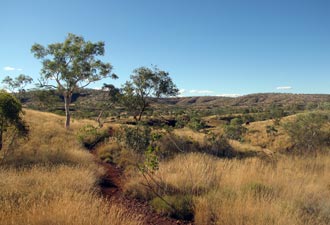 A stroll across the spinifex |
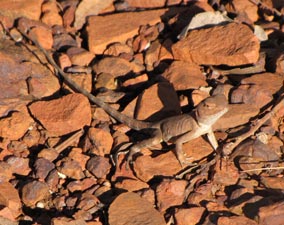 Well-camouflaged dragon |
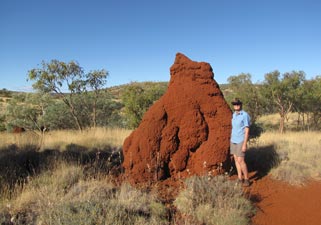 Nello and the giant termite nest |
|
|
|
|
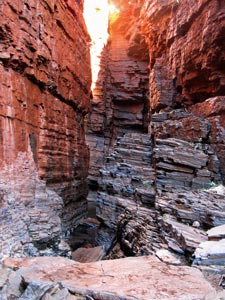 Narrow chute deep in Weano Gorge |
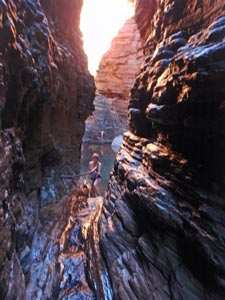 Nello exiting the chute ... |
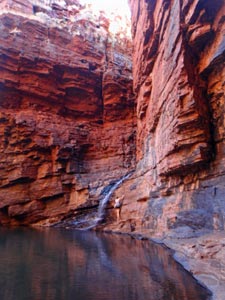 ... to reach Handrail Pool |
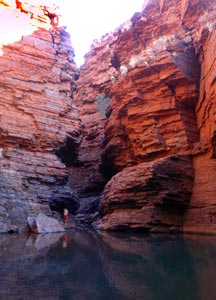 The gorge continues at the end of Handrail Pool |
|
|||
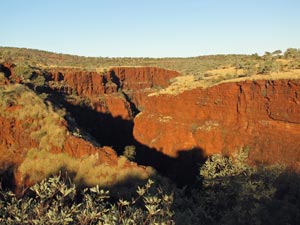 Walks end - back at Oxer Lookout |
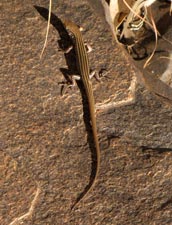 |
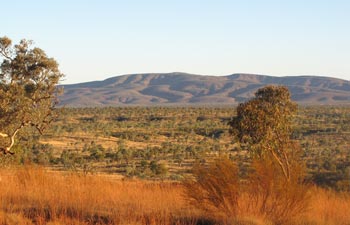 Heading back to camp across the Karajini savannah |
Hamersley Gorge |
||
|
||
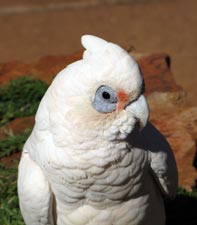 |
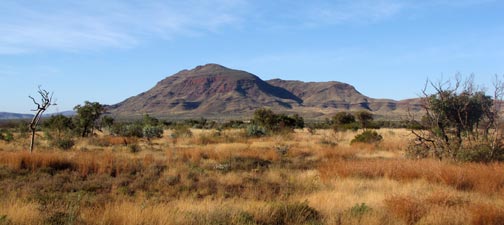 Mt Bruce - at 1235m the second highest mountain in Western Australia |
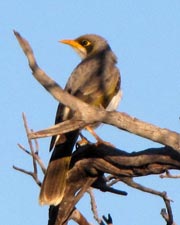 |
|
||
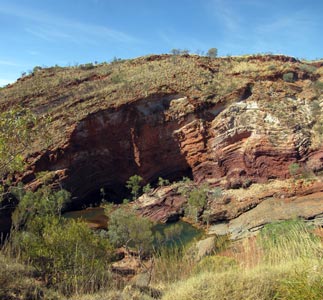 The twisted layering of the rock strata in Hamersley Gorge |
 View downstream into the gorge proper |
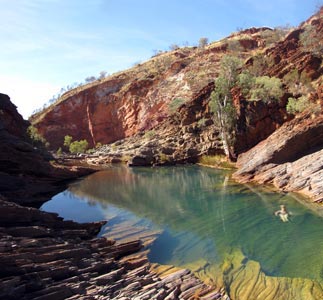 A cool dip in the top pool |
|
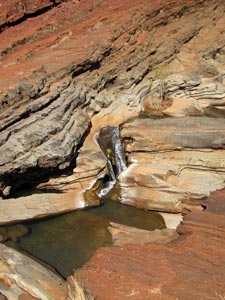 Spa Pool in the sloping rock slabs |
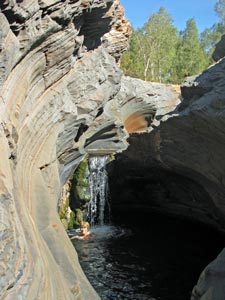 The fair Nello has a spa |
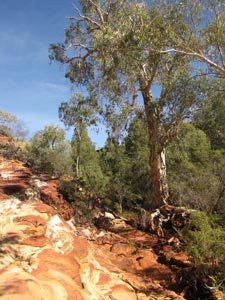 The gorge above the spa pool |
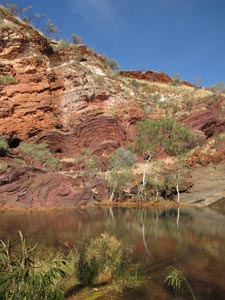 The main waterhole at Hamersley |
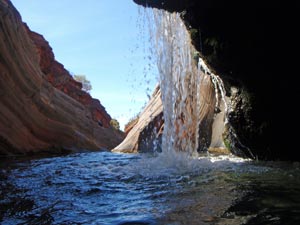 View from behind the spa falls |
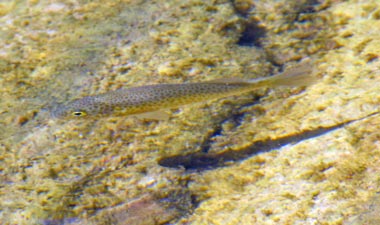 |
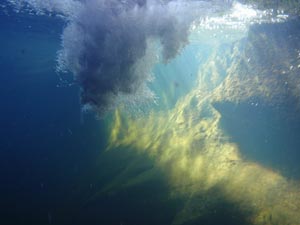 View from beneath the spa falls |
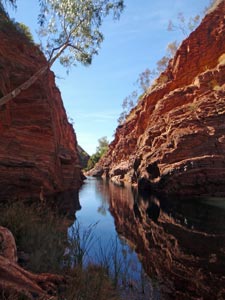 The long pool in Hamersley Gorge |
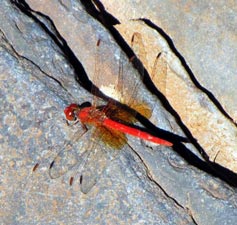 |
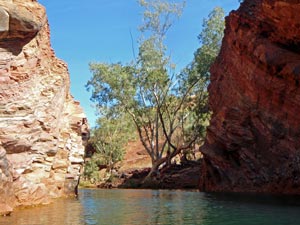 Looking back towards the main Hamersley Gorge |
|
||
|
||